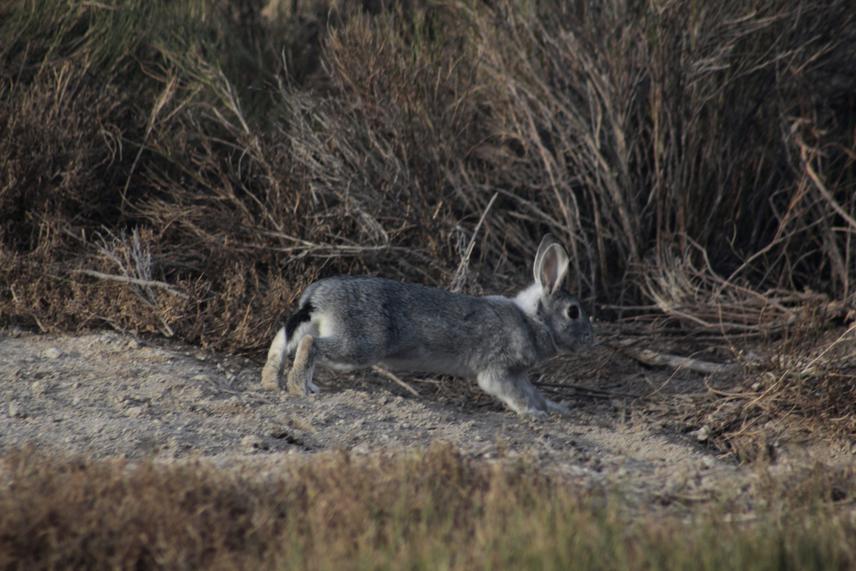Sabrina Yasmin Bobadilla
The European rabbit is considered one of the 100 most damaging invasive alien species in the world. Background of its impact includes extinction of native species, soil erosion, and facilitation of exotics plants. In Argentina is distributed in several regions where the ecotone Monte Desert-Patagonia is of great importance due to the high biological diversity. Therefore the objectives of this work are a) to evaluate social perception of landowners about invasive species, b) resource utilization (habitat use and diet) of European rabbit and c) its impact on native fauna (medium mammals) and ecosystem (soil and vegetation) in a protected area of Argentina.

Europe rabbit in Reserve Llancanelo. © Lucas Aros, park ranger.
Biological invasions are considered one of the most important threats to biodiversity, as well as impacting the economy and human health (diseases transmission). The arid ecosystems of Argentina are experiencing a rapid conversion of habitat as a result of overgrazing, agricultural expansion, desertification, salinization, soil degradation and disturbances by exotic species. In Argentina at least 6 invasive mammals are present in arid ecosystems. The European rabbit is native from Iberian Peninsula and have been introduced in approximately 800 islands around the world. Globally, it is recognized because of its damaging effects due to overgrazing and construction of burrows which lead to the loss of vegetation cover and consequent soil erosion. In Argentina, was first introduced in 1880 for food purposes and it has now established several populations due to their ability to cope with new habitats. This work will contribute on the one hand, knowledge regarding the use of resources that the European rabbit make in the invaded environment and its overlapping with native species such as Mendoza Tuco-tuco (Ctenomys mendocinus), Plains Viscacha (Lagostomus maximus) or Mara (Dolichotis patagonum). Also, this project will analyse the impact of wild rabbit warrens on native flora (plant diversity and composition) and soil nutrient cycles on areas of high conservation value such as the arid ecosystems of Argentina.
Moreover, we think a key component of the conflict associated with biological invasions is its human dimension. In this sense, we propose on the one hand, know the perceptions and attitudes of people through structured interviews. On the other hand, extension activities (different workshops) will generate spaces of participation and where we will communicate all our progress about the project. Therefore, we will promote the revaluation of the native ecosystems and responsible civic participation in conservation of natural ecosystems.
Finally, our work will generate an effective tool for resource management by integrating scientific knowledge on invasive species impact and social perception for the conservation of protected area considering local needs. In this way, the final aim of this project is the scientific tools for Offices of Natural Resources and Protected areas, and National Ministry of Environment to plan a management strategy for protecting these arid habitats on an integrated program among relevant players (scientists, government officials, managers of protected areas, and landowners) ensuring not only the protection of endemic species and the arid ecosystem but also the productivity and economy of landowners.